Items Food

What are the essential items to pack for a backpacking trip ?
Essential Items to Pack for a Backpacking Trip: Shelter and Sleeping Gear, Clothing, Food and Water, Cooking and Eating Utensils, First Aid Kit and Safety Items, Navigation Tools, and Miscellaneous Items.

What are the best practices for storing food to maintain its safety ?
Storing food safely is crucial to prevent foodborne illnesses and ensure that your meals are fresh and flavorful. Here are some best practices to follow when storing food: ### Refrigeration - Store raw meat, poultry, and seafood separately from other foods to avoid cross-contamination. Use airtight containers or wrap them tightly in plastic wrap. - Keep dairy products like milk, cheese, and yogurt on the upper shelves of the refrigerator, where the temperature is more consistent. - Store eggs in their original carton on a middle shelf to maintain a constant temperature. - Use leftovers within three to four days and store them in covered containers in the refrigerator. - Check expiration dates regularly and discard any expired products. ### Freezing - Label all frozen items with the date of freezing and the content. - Freeze meats individually before storing them together to make it easier to thaw only what you need. - Leave space around frozen items to allow for proper air circulation and faster freezing times. - Do not overload the freezer as this can cause uneven freezing and spoilage. ### Pantry Storage - Keep dry goods like grains, pasta, and cereals in airtight containers to prevent moisture and pests from getting in. - Store oils and vinegars away from direct sunlight to prevent rancidity. - Rotate pantry items regularly, placing new items behind older ones to use up older stock first. - Monitor for signs of pests and take immediate action if any are found. ### General Guidelines - Clean your refrigerator and freezer regularly to remove spills and prevent bacteria growth. - Wash hands thoroughly before handling food. - Use separate cutting boards for raw meats and vegetables to avoid cross-contamination. - Cook foods to their recommended internal temperatures to kill harmful bacteria.

What are the essential items to include in a disaster preparedness kit ?
A disaster preparedness kit should include essential items such as water, non-perishable food, a first aid kit, warm clothing and bedding, light sources, communication devices, tools, cash, important documents, and personal items. It is crucial to regularly check and replace expired items to ensure the kit is ready for any emergency situation.

Are there any specific items that cannot be included in a tax-free shopping claim ?
Certain items may not qualify for tax exemption in tax-free shopping, including alcohol and tobacco products, perishable food items, medications and prescription drugs, firearms and weapons, and hazardous materials. The specific items that cannot be included in a tax-free shopping claim may vary depending on the country's customs regulations and policies.

How do street food vendors keep their food safe and hygienic ?
Street food vendors play a crucial role in providing affordable and delicious meals to millions of people worldwide. However, ensuring that their food is safe and hygienic can be challenging due to various factors such as limited space, lack of proper equipment, and unpredictable weather conditions. In this article, we will discuss some effective ways street food vendors can maintain the safety and cleanliness of their food.

How often should I check and replace items in my emergency preparedness kit ?
Maintaining an emergency preparedness kit is crucial for ensuring you have the necessary supplies in case of unexpected events. The frequency of checking and replacing items depends on several factors, including expiration dates and usage. General guidelines include monthly quick inspections, annual detailed reviews, and immediate replacements after use. Specific items to consider are medical supplies, food and water, batteries, clothing, and tools. Best practices include labeling expiration dates, keeping a list, and staying informed. Regular maintenance ensures your kit is always ready for emergencies.

What are some common pitfalls to avoid when buying second-hand items ?
When buying second-hand items, it's important to inspect them thoroughly for any signs of damage or wear and tear. You should also verify the authenticity of luxury items and research their value to ensure you're getting a fair price. Be wary of scams and consider the return policy before making a purchase. By following these tips, you can avoid common pitfalls and find great deals on high-quality products.
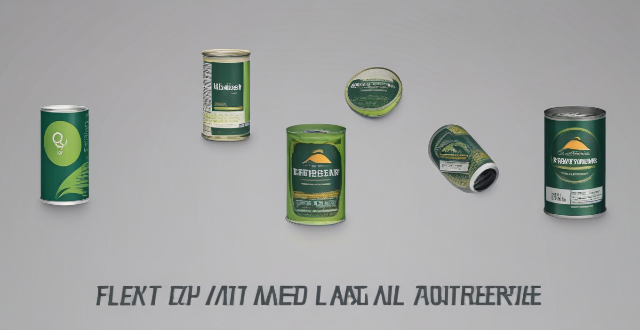
How can I save money while shopping for luxury items ?
Shopping for luxury items doesn't have to be expensive if you follow these tips. Set a budget, research prices, wait for sales, choose timeless designs, invest in quality, consider pre-owned items, negotiate prices, and avoid impulse buying to save money while enjoying the finer things in life.

How are food safety regulations enforced by governments ?
Governments around the world enforce food safety regulations through various methods, including legislation and policy development, inspection and compliance checks, licensing and certification, education and training, penalties and enforcement actions, public communication, and international cooperation. These efforts aim to protect consumers from harmful substances and contaminants in food products while promoting fair trade practices among producers and retailers.
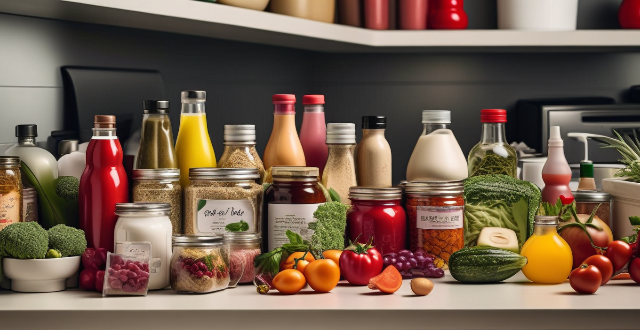
How can I reduce food waste in my kitchen ?
To reduce food waste in your kitchen, you can plan meals ahead of shopping, shop smart by making a list and buying fresh produce, store foods properly using airtight containers, understand expiration dates, preserve food through techniques like freezing and dehydrating, get creative with leftovers, practice portion control, and educate yourself on the environmental impact of food waste.
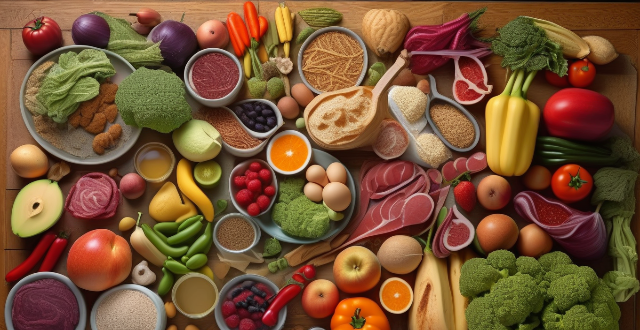
Why is personal hygiene important for those who handle or prepare food ?
Personal hygiene is critical for food handlers due to its impact on health, safety, and quality assurance. Cross-contamination and allergen transfer can lead to illnesses, while cleanliness affects food presentation and flavor. Handwashing, proper grooming, and workstation cleaning are essential practices to maintain hygiene.
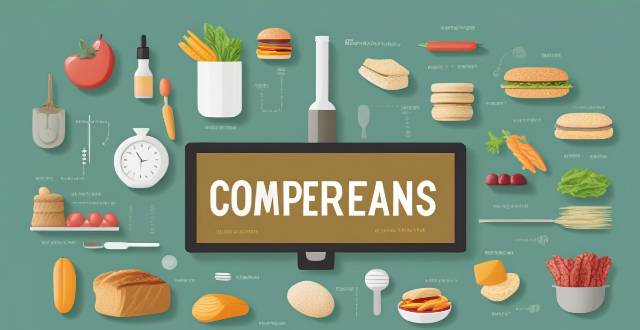
How can small food businesses ensure they are compliant with food safety regulations ?
The text provides a comprehensive guide on how small food businesses can ensure compliance with food safety regulations. It emphasizes the importance of compliance in protecting consumer health, avoiding legal consequences, and enhancing brand reputation. The steps for ensuring compliance include understanding the regulations, training staff, implementing GMP, using quality ingredients, monitoring and testing, and having a plan for non-compliance. Following these steps can help small food businesses meet legal requirements and assure customers of the highest standards in food safety, ultimately leading to customer loyalty and a strong brand reputation.

What are the best practices for recycling household items ?
Recycling household items is crucial for reducing waste and conserving resources. Best practices include knowing local guidelines, cleaning items, flattening cardboard, separating recyclables, using bins properly, donating usable items, composting organic waste, and buying products with recyclable packaging. By following these steps, individuals can contribute to a more sustainable future and reduce their environmental impact.

How do I know if the discounted items at Outlet Stores are of good quality ?
Outlet stores offer discounted items, but it's important to assess their quality before buying. Check for manufacturer defects, research brand reputation, compare prices with non-discounted items, and ask about return policies.
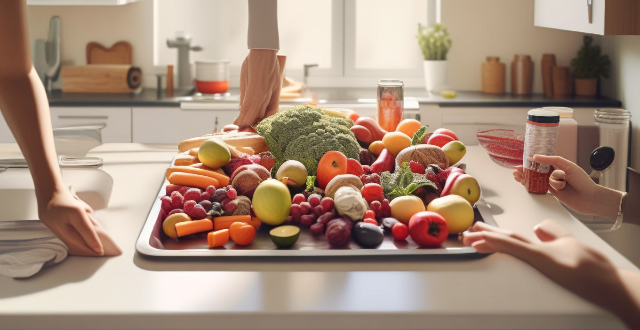
What are some creative ways to repurpose second-hand items ?
Repurposing second-hand items is a creative and sustainable practice that can save money and reduce waste. Here are some ideas for giving new life to pre-loved items: furniture makeover, clothing transformations, kitchenware reinvention, accessory revamps, artwork and décor, and kids' toys reimagined. By getting creative with second-hand items, we can contribute to promoting sustainability while saving money.
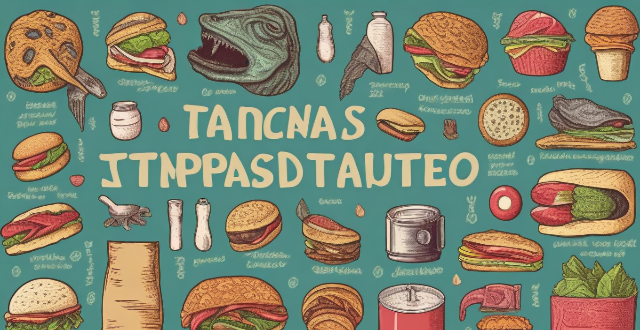
How does temperature control affect food safety ?
This text discusses the impact of temperature control on food safety, emphasizing the risks associated with improper temperature management and the benefits of maintaining appropriate temperatures. It highlights the danger zone for bacterial growth, spoilage due to mold and yeast, and toxin production from bacteria. The article also outlines best practices for temperature control in refrigeration, freezing, cooking, reheating, handling, and storage to ensure food safety.

What are the best practices for storing food and water for emergencies ?
When it comes to emergency preparedness, having a reliable supply of food and water is essential. Here are some best practices to ensure that you have what you need in case of an emergency: Food Storage: - Rotate regularly - Choose wisely - Portion control - Stay organized - Store safely Water Storage: - Quantity matters - Container choice - Replace regularly - Sanitize containers - Maintain accessibility Additional Tips: - Have a plan - Prepare for special needs - Be ready to cook

How can I safely transport large or fragile second-hand items ?
The article provides a detailed guide on how to safely transport large or fragile second-hand items. It starts by listing the necessary packing materials and then moves on to assessing the item for pre-existing damage. The article emphasizes the importance of disassembling larger items, proper packing techniques for both fragile and large items, and loading the vehicle carefully. It also includes tips for safe driving during transit and careful unloading. The article concludes with a recommendation to consult professional movers when unsure about handling such items.

Can vegetarians enjoy a variety of Indian food ?
Vegetarians can enjoy a variety of Indian food due to the country's diverse cuisine and common dietary choice. Traditional vegetarian dishes like Chana Masala and Palak Paneer offer delicious options, while regional variations such as South Indian Dosas and Gujarati Thali provide unique flavors. Street food also presents numerous vegetarian choices like Pani Puri and Vada Pav. Additionally, global influence has led to more vegetarian versions of classic dishes in restaurants worldwide.

What are some fast techniques for sorting and storing items ?
Sorting and storing items can be a time-consuming task, but there are several fast techniques that can help you organize your belongings efficiently. Here are some tips to get started: 1. Declutter First: Remove unnecessary items from your space. Donate or sell items that are still in good condition. Dispose of items that are broken or unusable. 2. Categorize Your Items: Categorize your items into groups based on their purpose, frequency of use, or any other criteria that make sense for your situation. This will help you determine where each item should be stored. 3. Use Containers and Labels: Invest in containers of various sizes to store your sorted items. Clear containers are great because they allow you to see what's inside without opening them. Label each container with its category or contents to make it easy to find what you need quickly. 4. Utilize Vertical Space: Shelves, hanging organizers, and wall-mounted racks can help maximize your storage capacity and keep things off the floor. 5. Maintain Organization: After sorting and storing your items, it's crucial to maintain their organization regularly. Set aside time each week or month to go through your belongings and ensure everything is in its proper place.

What are the top websites for purchasing second-hand or refurbished items ?
Purchasing second-hand or refurbished items is a great way to save money while also being environmentally conscious. Here are some of the top websites for buying such items: 1. eBay is one of the largest online marketplaces where you can find both new and used items. It offers a wide range of products, including electronics, clothing, furniture, and more. 2. Craigslist is a classified advertisements website where people can post listings for various items, including second-hand goods. 3. Facebook Marketplace is a platform within Facebook where users can buy and sell items locally. 4. OfferUp is a mobile app that allows users to buy and sell items locally. 5. Swappa is an online marketplace specifically designed for buying and selling gently used technology like smartphones, laptops, and tablets. 6. Gazelle is a website that specializes in buying and selling refurbished electronics, including smartphones, tablets, and laptops.

What kind of food can I expect on a cruise ?
Cruise ships offer a diverse array of food options to suit any palate or dietary restriction. The main dining room is the primary restaurant on the ship where passengers can enjoy formal meals with a fixed schedule, while the buffet restaurant offers a more casual dining experience with a variety of food stations. Specialty restaurants provide unique dining experiences for an additional fee, and room service is available 24 hours a day for those who prefer to dine in the comfort of their stateroom. Cafés and quick bite locations are also available for lighter fare or snacks throughout the day.

What are the benefits of recycling and reusing second-hand items ?
Recycling and reusing second-hand items offer significant benefits for the environment, economy, and society. By reducing landfill waste, conserving natural resources, and lowering emissions, these practices help to mitigate environmental challenges. Economically, they provide cost savings for individuals and create job opportunities. Socially, they promote sustainability and community engagement. Overall, recycling and reusing second-hand items are essential steps towards a more sustainable future.

How do I use chopsticks properly when eating Japanese food ?
Using chopsticks is an art form in Japan, and there are certain etiquette rules that you should follow to show respect for the culture. Here's a step-by-step guide on how to use chopsticks properly when eating Japanese food: 1. Holding the Chopsticks: Hold the first chopstick (the one closer to the tip of the food) like a pencil, resting it between your thumb and index finger. This is your stationary chopstick. Place the second chopstick (the one closer to the end of the food) underneath the first chopstick, resting on your ring finger. This is your moving chopstick. 2. Picking Up Food: Use the tips of the chopsticks to scoop up food rather than pincing it with the ends. This is considered more polite and traditional. For larger pieces of food, it's acceptable to use both chopsticks to pick them up. For smaller items, try using just one chopstick if possible. 3. Eating: If you need to dip your food in soy sauce or another sauce, do so lightly and minimally. Overdoing it can be seen as wasteful. Place the food in your mouth from the chopsticks without making any noise. Chew with your mouth closed. 4. Chopstick Etiquette: Avoid playing with your chopsticks, tapping them on the table, or leaving them standing in your food. These actions are considered impolite. Never use your chopsticks to point at people or gesture with them. This is rude and associated with funeral rites in Japan. Do not lay your chopsticks across your plate or bowl as this resembles incense sticks at a funeral. Instead, rest them on the chopstick rest provided or on the edge of your dish. 5. After Eating: It's common to wipe the ends of the chopsticks before and after use with the small towel or oshibori provided. If you're at a restaurant, leave the chopsticks as they are when you finish eating. Do not put them back in their original packaging or wrap them up. By following these guidelines, you'll not only avoid offending anyone but also show that you respect and appreciate Japanese dining culture. Remember, practice makes perfect!
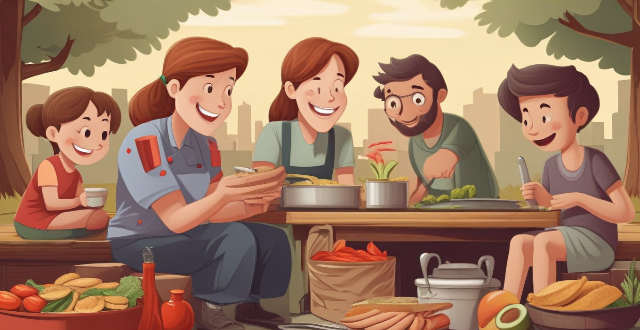
What are the health and safety considerations for organizing a food festival ?
Organizing a food festival requires careful consideration of health and safety measures to protect vendors and attendees. Key areas include sanitation and hygiene, allergy information and labeling, food safety inspections, first aid and emergency response, crowd management, fire safety, and cleanliness and waste management. By implementing these measures, you can ensure a safe and enjoyable event for all.

What is the ideal way to pack fragile items for a journey ?
Packing fragile items for a journey can be a daunting task, but with the right approach, you can ensure that your precious belongings arrive at their destination safely. Here are some tips on how to pack fragile items ideally: 1. Use proper packing materials such as bubble wrap, packing paper, foam peanuts, and anti-static polyethylene bags. 2. Wrap each item individually to reduce the risk of damage during transit. 3. Use boxes of appropriate size to accommodate the item without too much extra space or pressure. 4. Label boxes appropriately with clear, legible writing to indicate that the box contains fragile items and which direction is up.
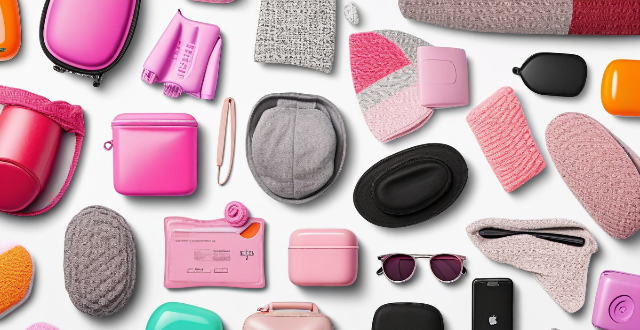
Are there any specific products that are always on sale ?
Products like electronics, fashion items, home goods, sports equipment, toys, books, cosmetics, and grocery items are typically always on sale.

Can you suggest any essential items I should always pack for a vacation ?
When planning a vacation, it's important to pack the essential items that will ensure your comfort and safety throughout the trip. These include travel documents, clothing, toiletries, electronics and accessories, and miscellaneous items such as a travel pillow, reusable water bottle, snacks, reading material, cash and credit cards, and a travel journal. By packing these essentials in your carry-on luggage, you can ensure a comfortable and enjoyable vacation experience.

How do I avoid getting sick from eating local street food ?
Eating local street food is a great way to experience the culture and flavors of a new place. However, it can also be a source of foodborne illness if you're not careful. Here are some tips to help you avoid getting sick from eating local street food: Choose busy stalls or restaurants that appear clean and well-maintained. Avoid raw or undercooked meat and seafood, as they can harbor harmful bacteria and parasites. Be wary of street vendors selling pre-packaged foods, as these items can sometimes be exposed to contaminants during storage and handling. Use bottled water for drinking and cleaning utensils before eating. Bring your own reusable utensils to reduce your exposure to potentially harmful chemicals found in some plastic utensils. Practice good hygiene habits such as washing your hands before eating and avoiding touching your face while eating.

What are the best sources for buying organic food ?
The article discusses various sources for buying organic food, including farmers markets, online stores, health food stores, and community supported agriculture (CSA) programs. Each option has its own set of benefits and drawbacks, such as freshness, convenience, selection, cost, and support for local agriculture. The article emphasizes the importance of making healthy choices for oneself and family by choosing organic food.